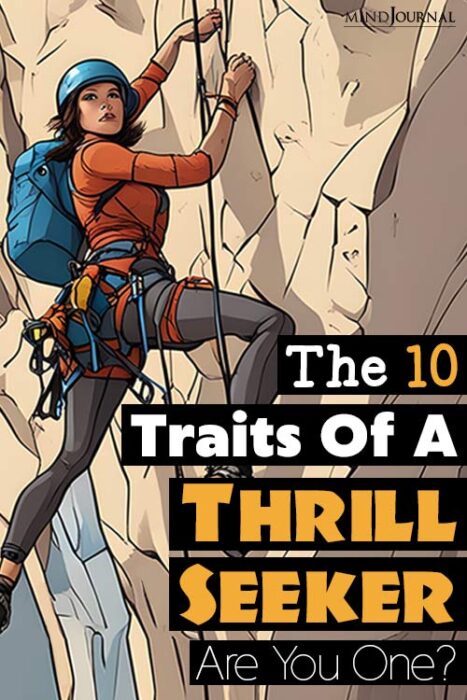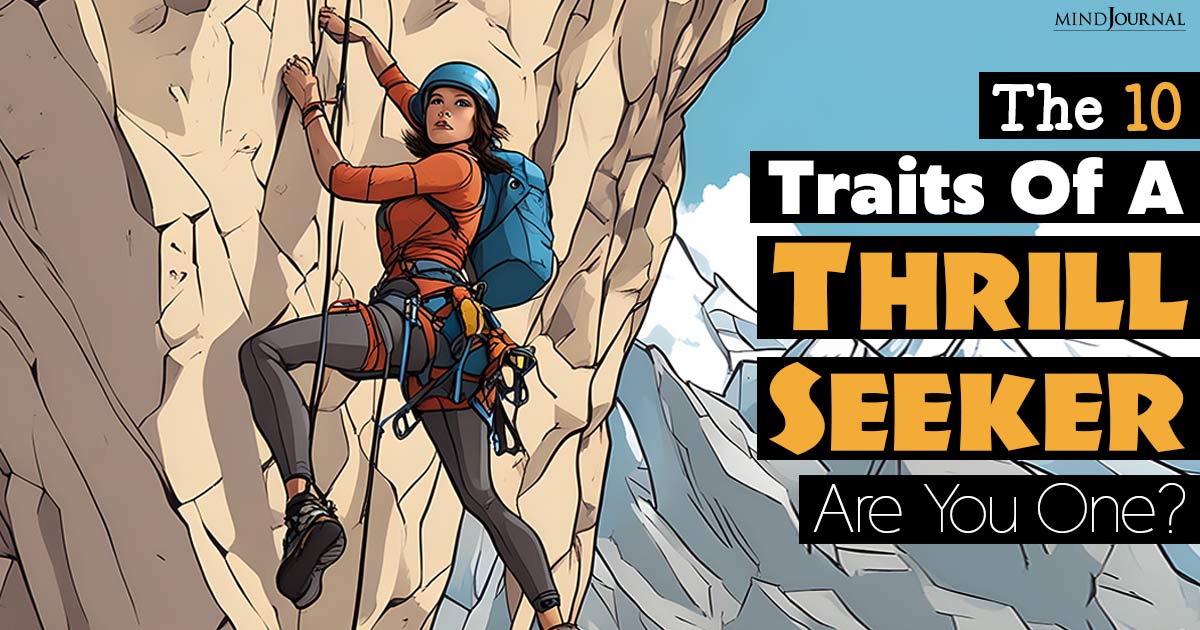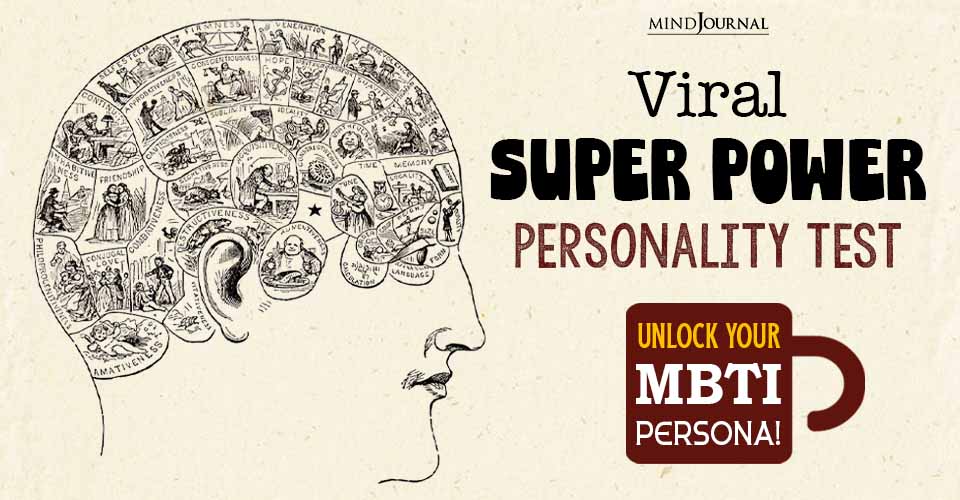Have you ever found yourself drawn to exhilarating experiences that make your heart race and adrenaline surge through your veins? Do you often seek out activities that push your limits and offer a rush like no other? If so, you may be a thrill seeker at heart. Let’s explore thrill seeker meaning, thrill seeking psychology and the thrill seeker personality type.
Unveiling the Thrill Seeker Meaning
Thrill seeker meaning: A thrill seeker is an individual who actively pursues and craves excitement, adrenaline rushes, and novel experiences that often involve some level of risk or danger.
At its core, the thrill seeker meaning revolves around an individual’s strong desire for thrilling experiences and a propensity to seek out novelty, excitement, and risk. Thrill seekers are individuals who actively pursue activities that provide them with an intense sense of excitement, pushing the boundaries of their comfort zones. These individuals are motivated by the exhilaration they feel in high-stress or adventurous situations.
For example, consider someone who regularly participates in extreme sports like skydiving or rock climbing. They willingly expose themselves to the thrill of freefalling from an airplane or scaling steep cliffs, finding the intense sensations and challenges inherently rewarding.

The rush they experience during such activities fulfills their desire for excitement, making them classic examples of thrill seekers who actively seek out high-adrenaline adventures to satisfy their cravings for thrill and novelty.
For instance, in the movie “Point Break” (1991), an FBI agent goes undercover to infiltrate a gang of adrenaline-junkie bank robbers who are also extreme sports enthusiasts.
Related: How To Break Monotony In Life: 35 Hacks To Make Life More Thrilling
In the movie “The Beach” (2000), a young traveler becomes obsessed with finding a hidden paradise in Thailand, leading to a quest filled with adventure and danger.
Moreover, the film “Into the Wild” (2007) portrays a young man’s journey to live off the grid and experience the ultimate adventure in the Alaskan wilderness.
These movies feature characters who actively seek out exhilarating adventures, often pushing the boundaries of safety and engaging in high-risk activities to satisfy their cravings for excitement and novelty.
Now that we have gained some basic understanding of thrill seeker meaning, let us delve into the fascinating world of thrill seeking behaviour, thrill seeking psychology and explore the thrill seeker personality type.
Thrill Seeking Psychology
The psychology behind thrill seeking behaviour is multifaceted and can be influenced by various factors, including genetic predispositions, environmental factors, and individual personality traits.
Let’s explore some key aspects that contribute to the allure of thrill seeking:
1. Sensation Seeking
Sensation seeking is a trait closely associated with the thrill seeker personality. It refers to the tendency to seek varied, complex, and intense sensations and experiences. Thrill seekers often crave the sensory stimulation that comes with activities such as skydiving, bungee jumping, or riding roller coasters.
Sensation seeking is influenced by both genetic and environmental factors, including the release of dopamine, a neurotransmitter associated with pleasure and reward.
2. Biological Factors
Research suggests that biological factors, such as differences in brain chemistry and genetics, may influence one’s propensity for thrill-seeking behavior. Dopamine, a neurotransmitter associated with reward, has been linked to sensation seeking.
3. Personality Traits
Certain personality traits are associated with thrill seekers, including impulsivity, risk tolerance, and a preference for novelty and adventure.
4. Positive and Negative Reinforcement
Thrill-seeking behavior can be reinforced by both positive and negative consequences. Positive reinforcement includes the pleasure and excitement derived from the activity, while negative reinforcement may involve a relief from boredom or stress.
5. Developmental Factors
Some individuals may become thrill seekers as a result of their upbringing, early experiences, or peer influences. Childhood exposure to adventure and risk can play a role.
6. Coping Mechanisms
For some, thrill-seeking behavior can be a way to cope with psychological distress. Engaging in high-adrenaline activities might temporarily alleviate feelings of anxiety or depression.
7. Novelty and Variety
According to thrill seeker meaning, such individuals are drawn to novelty and variety, constantly seeking new and exciting experiences. The prospect of exploring uncharted territory, whether it’s traveling to unfamiliar destinations or trying out adrenaline-pumping activities, fuels their sense of adventure.
The allure lies in the anticipation of the unknown and the opportunity to break free from the monotony of everyday life.
8. Adrenaline Rush
The adrenaline rush is a key component of thrill seeking behaviour. Engaging in thrilling activities triggers the release of adrenaline, a hormone that prepares the body for a fight-or-flight response. The surge of adrenaline creates a heightened state of arousal and intensifies the overall experience.
The thrill seeker craves this rush, as it provides a sense of aliveness and an escape from the mundane.
Related: How To Be More Adventurous
9. Risk and Challenge
Thrill seekers are often motivated by the inherent risks associated with their chosen activities. They are willing to step outside their comfort zones and embrace challenges that test their physical and mental limits.
The element of risk adds an extra layer of excitement and serves as a catalyst for personal growth and self-discovery. Overcoming challenges and conquering fears can provide a profound sense of achievement and empowerment.
10. Flow State
Engaging in thrilling activities can facilitate the experience of flow, a state of complete immersion and focused attention. During flow, individuals become fully absorbed in the present moment, losing track of time and self-consciousness.
The combination of high skill level and high challenge level in thrill-seeking activities creates the perfect conditions for flow to occur. This state of optimal performance and deep enjoyment is highly rewarding for thrill seekers.

Understanding the Thrill Seeker Personality Type
While thrill seeking behaviour can be exhibited by individuals across various personality types, there are certain traits commonly associated with thrill seeker meaning. The most common thrill seeker personality type traits include:
1. Openness to Experience
Thrill seekers tend to be open-minded, curious, and receptive to new ideas and experiences. They have a strong desire to explore the world around them and actively seek out novel and unconventional activities.
2. High Sensation Seeking
As mentioned earlier, high sensation seeking is a defining characteristic of the thrill seeker personality. Thrill seekers have a heightened need for excitement, often seeking out intense sensory experiences to satisfy their cravings.
3. Risk Tolerance
Thrill seekers display an above-average tolerance for risk and uncertainty. They are comfortable with calculated risks and are willing to embrace the unknown for the sake of adventure.
4. Extroversion
While introverts can also be thrill seekers, extroversion is commonly associated with this personality type. Thrill seekers often thrive in social settings and enjoy sharing their exhilarating experiences with others.
5. Self-Confidence
Thrill seekers tend to possess a high level of self-confidence. They believe in their ability to handle challenging situations and trust their instincts when faced with risks.
What is Thrill Seeking Disorder?
Individuals who consistently engage in extreme and risky activities to the detriment of their physical and mental health may exhibit symptoms of impulsivity and sensation seeking, potentially indicative of underlying psychological issues.
Thrill seeking disorder and such behaviors may be addressed by mental health professionals, but they are typically examined within the context of existing psychiatric disorders like impulse control disorders or addiction.
However, thrill seeking disorder is not recognized as an official psychiatric disorder in the diagnostic manuals such as the Diagnostic and Statistical Manual of Mental Disorders (DSM-5) or the International Classification of Diseases (ICD-10).
While thrill seeking disorder may not be classified as a specific disorder, thrill seeking behaviors can be associated with other mental health conditions or underlying factors.
As per thrill seeker meaning, individuals who engage in persistent, reckless, and impulsive behaviors with a disregard for personal safety and consequences may be displaying symptoms of impulsive behavior or sensation-seeking tendencies.
These behaviors can be seen in conditions like Attention-Deficit/Hyperactivity Disorder (ADHD), Antisocial Personality Disorder, or certain substance use disorders.
It’s important to remember that engaging in thrill-seeking activities itself does not necessarily indicate the presence of a disorder. Many people enjoy adventurous activities and seek out thrills as a healthy and enjoyable part of their lives.
Related: How To Keep The Thrill In A Relationship?
However, if these behaviors become excessive, compulsive, or start interfering with an individual’s daily functioning, relationships, or overall well-being, it may be indicative of an underlying issue that could benefit from professional evaluation and intervention.
If you or someone you know is struggling with impulsive or reckless behaviors that are causing distress or impairing daily life, it is advisable to seek guidance from a mental health professional. They can provide a comprehensive assessment, diagnosis, and appropriate treatment options based on an individual’s specific needs.
Best Thrill Seeking Activities You Can Try
Thrill seekers are individuals who seek excitement, adrenaline rushes, and novelty in various activities. Here are some examples of the best thrill seeking activities that thrill seekers often engage in and that define thrill seeker meaning:
1. Skydiving
Jumping out of an airplane with a parachute is a classic thrill-seeking activity. The sensation of freefall and the rush of adrenaline are major draws for skydivers.
2. Bungee Jumping
This involves jumping off a high platform or bridge with a bungee cord attached to your ankles, experiencing a sudden, exhilarating freefall before rebounding.
3. Rock Climbing
Scaling steep cliffs and mountains can be an adrenaline-pumping experience, especially for those who enjoy the physical and mental challenge.
4. Whitewater Rafting
Rafting down fast-flowing rivers with challenging rapids provides an intense and exciting adventure. This is surely one of the best thrill seeking activities.
5. Base Jumping
Similar to skydiving, but from much lower altitudes, base jumping involves leaping off cliffs, buildings, or other fixed objects with a parachute.
6. Hang Gliding
Soaring through the air with just a lightweight, non-motorized glider can be both thrilling and peaceful.
7. Cave Diving
Exploring underwater caves, often in remote and challenging environments, offers a unique and adventurous experience for thrill seekers.
8. Motorsports
Activities like racing cars, motorcycles, or even off-road vehicles provide high-speed excitement and competition.
9. Extreme Sports
This category includes activities like snowboarding, skateboarding, BMX biking, and parkour, which are known for their high-risk elements and adrenaline rushes.
10. Paragliding
Gliding through the air while harnessed to a parachute-like wing is a thrilling way to take in beautiful landscapes.
11. Zip Lining
Whizzing along a cable from one point to another, often at high speeds and sometimes over scenic landscapes, can be an exhilarating experience.
12. Heli-Skiing
Skiing in remote, off-piste locations, accessed by helicopter, provides access to untouched, challenging terrain for experienced skiers and snowboarders.
13. Free Solo Climbing
Climbing without ropes or safety equipment, often on challenging rock faces, requires an extraordinary level of skill and fearlessness.
14. Surfing Big Waves
Riding massive ocean waves, such as those found at famous spots like Pipeline in Hawaii, can be incredibly thrilling but also dangerous.
15. Shark Cage Diving
This allows thrill seekers to get up close and personal with sharks while safely enclosed in a cage submerged in the ocean. This is perhaps one of the best thrill seeking activities for most people.
16. Aerobatic Flying
Piloting or being a passenger in an aerobatic aircraft, where you experience extreme maneuvers, rolls, and spins.
17. Street Luge
Racing down steep roads on a small, low-to-the-ground board or sled can provide an intense thrill.
18. Wildlife Safaris
Going on safaris in areas with dangerous or elusive animals, like lions or tigers, can provide a different kind of adrenaline rush.
Remember that these activities often come with inherent risks, so it’s essential to take proper safety precautions, receive proper training, and consider the potential consequences before engaging in them.
Related: 40+ Quotes About Adventure And Life To Awaken Your Wanderlust

Takeaway
Thrill seeking behaviour is a fascinating aspect of human psychology that drives individuals to seek out thrilling experiences and push their limits. The allure of novelty, adrenaline rushes, and the pursuit of personal growth contribute to the thrill seeker personality type.
Whether you find yourself identifying as a thrill seeker or simply enjoy observing from the sidelines, understanding thrill seeker meaning and thrill seeking psychology can provide valuable insights into our innate need for excitement and adventure.
So, embrace the thrill seeker within you, step out of your comfort zone, and embark on thrilling adventures that ignite your spirit and invigorate your senses. Remember, life is meant to be lived to the fullest, and embracing the thrill seeker within can add an extra spark of excitement to your journey.
Happy exploring!
Frequently Asked Questions (FAQs):
What is a thrill seeker person?
A thrill seeker is someone who actively pursues excitement, novelty, and adrenaline-inducing experiences, often involving risk and danger.
What is the meaning of adventure seeker?
An adventure seeker is an individual who actively seeks and enjoys thrilling, unconventional, and daring experiences and challenges in life.
What is opposite of thrill seekers?
The opposite of thrill seekers are individuals who prefer safety, routine, and predictability, avoiding high-risk or adventurous activities.









Leave a Reply
You must be logged in to post a comment.